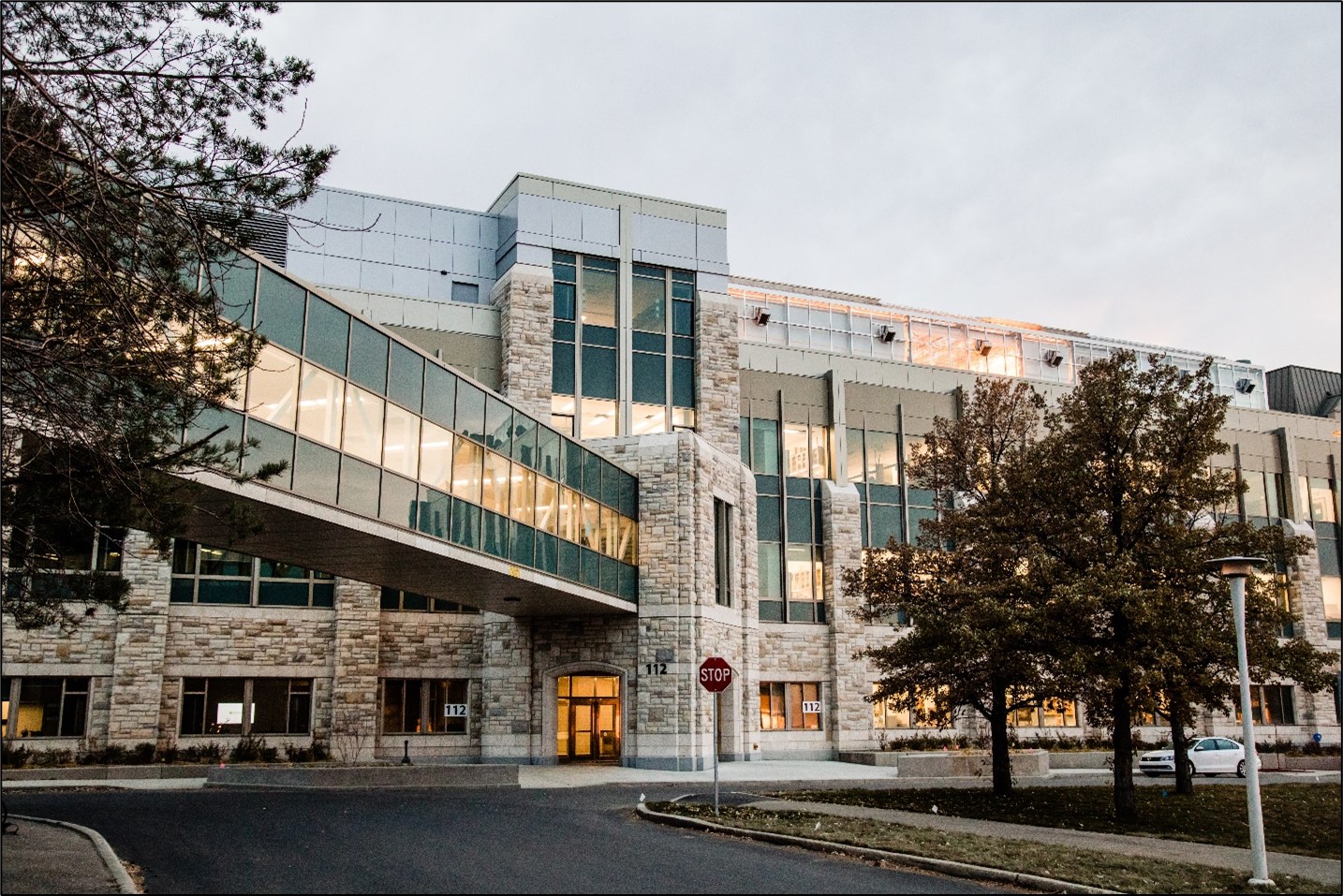AviProtek® and Solarban® Glasses Deliver a Bird-Friendly, Science-on-Display Façade for the University of Saskatchewan’s Collaborative Science Research Building

PITTSBURGH, May 25, 2021 — Embracing a “science-on-display” theme, the state-of-the-art Collaborative Science Research Building at the University of Saskatchewan in Canada delivers an integrated, sustainable environment for the school’s biology and agricultural departments.
Decorated with stone columns to blend into the campus’s Gothic style, the 72,118-square-foot building features floor-to-ceiling AviProtek® E bird-friendly, solar control low-emissivity (low-e) glass consisting of Solarban® 70 glass by Vitro Architectural Glass and acid-etched AviProtek® bird-friendly patterns by Walker Glass. In addition to protecting the school’s thriving bird population, the glass showcases the work of researchers affiliated with the University’s Global Institute for Food Security, who are devoted to pursuing developments related to drought-tolerant crops and pest-control.
Responding to the school’s request that bird-friendly glazing be incorporated on all vision glass, Walker Glass recommended AviProtek® Pattern 217, consisting of bird-friendly, acid-etched visual markers on the exterior-facing surface of Vitro Glass’s high-performing solar control, low-e glass.
Designed in accordance with the Canadian government’s Bird-Friendly Building Design Standard CSA A460-19, AviProtek® Pattern 217 fulfills requirements that bird-friendly visual markers be placed on the exterior surface of the glass and at a minimum distance of 50 millimeters from each other. These two mandates make it easier for birds to see and avoid colliding with glass building panels and facades, regardless of lighting conditions.
Spandrels finished with colorful OPACI-COAT 300® coatings by ICD High Performance Coatings further enhance building design and bird safety. AviProtek® E glass also was specified for the pedestrian bridge and rooftop greenhouses.
Helping the building qualify for Green Globes certification, Keith Henry, FRAIC, SAA, LEED AP, a partner with Henry Downing Architects, said that insulating glass units (IGU) with Solarban® 70 glass were selected to reduce heat gain and maximize visible light. “Energy modeling was conducted to encompass all aspects of the building envelope, including airtightness for the curtainwall,” he explained. Flad Architects served as the design architect and laboratory planning consultant for the project.
One of industry’s highest performing solar control, low-e glasses, Solarban® 70 glass provides visible light transmittance (VLT) of 64% and a solar heat gain coefficient (SHGC) of 0.27 in a one-inch IGU with clear glass.
Walker Glass AviProtek® E glasses combine low-glass coatings by Vitro Glass with decorative patterns that birds can see in flight, enabling them to avoid collisions with windows and glass-walled building facades. The past year has seen a surge in legislation for bird-safe building materials in the U.S., Canada and around the world, including the Bird-Safe Buildings Act, which was passed by the U.S. House of Representatives in July 2020, as well as New York City’s bird-friendly building materials law, which was enacted in January 2021.
For more information about AviProtek® E glass, visit www.walkerglass.com. To learn more about Solarban® 70 glass and the rest of Vitro Glass’s full line of architectural glasses, visit www.vitroglazings.com or call 1-855-VTRO-GLS (887-6457).
Solarban® are registered trademarks owned by Vitro.
AviProtek® is a registered trademark of Walker Glass Company Limited.
OPACI-COAT 300® is a registered trademark of ICD High Performance Coatings.
About Vitro Architectural Glass
Vitro Architectural Glass, part of Vitro, S.A.B. de C.V. (BMV: VITROA), is the largest glass producer in the Western Hemisphere, manufacturing a range of industry-leading, energy-efficient, high-performance products such as Solarban®, Sungate® and Starphire Ultra-Clear® glasses. Committed to continually raising the industry standard for sustainability, Vitro was the first U.S. glass manufacturer to have its entire collection of architectural glass products earn Cradle to Cradle Certified® status and the first North American manufacturer to publish third-party verified Environmental Product Declarations (EPDs) for flat glass and processed glass products. Additionally, as of April 2024, all Vitro architectural glass products meet the Top 20% Low Embodied Carbon (LEC) material Global Warming Potential (GWP) threshold the U.S. General Services Administration (GSA) established pursuant to the Inflation Reduction Act of 2022 and related guidance from the U.S. Environmental Protection Agency. Vitro operates seven glass production facilities across North America, four residential glass fabrication plants in Canada and one of the world’s largest glass research and development facilities in Pittsburgh, Pennsylvania. For more information, please visit VitroGlazings.com.

Media Contact:
Robert J. Struble
Vitro Architectural Glass
412-820-8138
rstruble@vitro.com
www.vitroglazings.com
